In our quest for a greener planet, every little change counts, especially when it comes to the kitchen, a place where we spend a significant amount of our daily lives. As consumers, we’re increasingly turning to eco-friendly alternatives to reduce our carbon footprint. Carbon neutral kitchenware, in particular, has been making waves for its commitment to sustainability and environmental consciousness. In this article, we delve into why choosing carbon neutral kitchenware is a smart and responsible decision for both your home and the world.
The Rise of Eco-Conscious Kitchenware
In recent years, there has been a significant shift in consumer preferences towards sustainability and environmental responsibility. This shift has led to a burgeoning market for eco-conscious kitchenware, which is not only stylish and functional but also mindful of the planet. From ceramic mugs to bamboo cutting boards, the variety of sustainable kitchen products available has expanded, making it easier for individuals to make greener choices in their daily lives.
The demand for eco-friendly kitchenware has been fueled by a growing awareness of the environmental impact of traditional materials and manufacturing processes. Plastics, for instance, have long been a staple in kitchenware, but their contribution to pollution and ocean waste has become a major concern. As a result, consumers are increasingly seeking alternatives that are not only durable but also eco-friendly.
One of the key drivers behind this trend is the rise of social media and influencers who champion sustainable living. With platforms like Instagram and TikTok, eco-conscious kitchenware brands have gained visibility, showcasing their products to a wider audience. The hashtag #sustainablekitchen has become a popular trend, with users sharing their favorite eco-friendly items and encouraging others to make more environmentally responsible choices.
Another factor contributing to the popularity of eco-conscious kitchenware is the growing concern over climate change. As people become more aware of the urgent need to reduce carbon emissions, they are looking for ways to minimize their ecological footprint. Kitchenware, which is used daily and often replaced frequently, has become a target for sustainable innovation.
The materials used in eco-conscious kitchenware have evolved to meet these demands. Companies are now offering a range of products made from recycled materials, such as stainless steel, glass, and silicone, which are not only durable but also have a lower environmental impact compared to traditional plastics. Biodegradable materials like bamboo, cork, and wood are also gaining popularity for their natural and renewable properties.
Bamboo, in particular, has become a favorite among eco-conscious consumers. It grows rapidly and is naturally antimicrobial, making it a perfect choice for kitchenware. Bamboo cutting boards, for example, are not only stylish but also reduce the need for disposable wood boards, which can take decades to decompose.
Ceramic and glass kitchenware have also seen a resurgence, with many brands offering a wide range of designs that cater to both traditional and modern tastes. These materials are durable, microwave-safe, and dishwasher-friendly, making them practical for everyday use.
Sustainable kitchenware isn’t just about materials; it’s also about the manufacturing process. Many companies are now embracing circular economy principles, designing products that can be recycled or repurposed at the end of their life. This approach not only reduces waste but also minimizes the carbon footprint associated with production.
The market for eco-conscious kitchenware is also expanding beyond the kitchen itself. Brands are creating multi-purpose items that can be used in various settings, from the home to the office. For example, silicone cups that can be used for both hot and cold drinks are becoming increasingly popular, as are reusable straws and bamboo toothbrushes that offer an alternative to single-use plastics.
Despite the growing trend, there are still challenges to be addressed. Some eco-friendly materials can be more expensive than traditional alternatives, which may limit their accessibility for some consumers. Additionally, the lifecycle of products made from these materials needs to be carefully managed to ensure they are truly sustainable.
In conclusion, the rise of eco-conscious kitchenware reflects a broader shift in consumer values. As people become more environmentally aware, they are looking for ways to integrate sustainability into their daily lives, starting with the items they use in the kitchen. With a variety of options now available, making greener choices has never been easier or more stylish. The future of kitchenware is undeniably eco-friendly, and it’s here to stay.
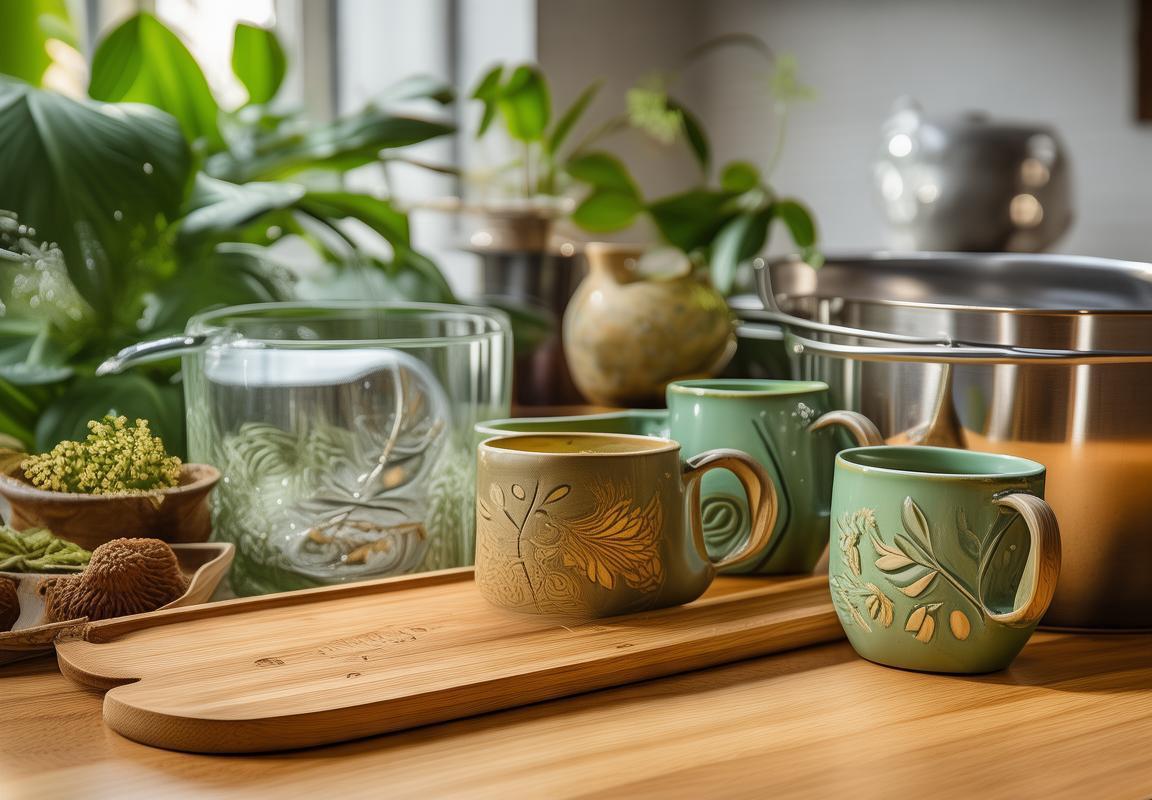
Understanding Carbon Neutral: What It Means for Kitchenware
Carbon neutral kitchenware has become a buzzword in the eco-conscious community, but what exactly does it mean, and how does it impact the products we use every day? Let’s delve into the concept and its implications for kitchenware.
The term “carbon neutral” refers to a state where the amount of carbon dioxide (CO2) released into the atmosphere is balanced by an equivalent amount of CO2 absorbed by natural processes or by artificial means. When it comes to kitchenware, this means that the production, use, and disposal of the products have a minimal carbon footprint, or that the carbon emitted is offset by investments in renewable energy or carbon offset projects.
To achieve carbon neutrality in kitchenware, manufacturers must consider the entire lifecycle of the product. This includes the extraction of raw materials, the manufacturing process, transportation, usage, and eventual recycling or disposal. By minimizing the use of fossil fuels and adopting sustainable practices, companies can produce items that contribute little to the greenhouse gas emissions responsible for climate change.
One of the key aspects of carbon neutral kitchenware is the sourcing of materials. Natural resources like bamboo, recycled glass, and stainless steel are often used due to their lower carbon footprint compared to traditional materials like plastic or certain metals. Bamboo, for instance, is fast-growing and requires minimal water and fertilizer, making it a highly sustainable choice.
The manufacturing process also plays a crucial role. Companies that prioritize carbon neutrality often invest in energy-efficient technologies and renewable energy sources. Solar panels, wind turbines, and geothermal heating are just a few examples of how manufacturers can reduce their carbon emissions during production.
Transportation is another significant factor. By choosing local suppliers and reducing the distance products travel, companies can lower their carbon emissions associated with distribution. Additionally, optimizing shipping routes and using fuel-efficient vehicles can further reduce the environmental impact.
When it comes to the product itself, carbon neutral kitchenware is designed to be durable and long-lasting. This means that it can be used for years, potentially reducing the need for frequent replacements and the subsequent waste generated by disposable items. Durable materials and thoughtful design ensure that these products can withstand the test of time.
However, even the most sustainable products need to be disposed of eventually. Carbon neutral kitchenware is often designed with recycling in mind. Biodegradable or compostable materials are used where possible, and the products are crafted to be easily recyclable at the end of their life. This not only reduces waste but also ensures that the materials can be reused in new products.
Carbon neutrality also extends to the packaging. Companies are increasingly using recycled and recyclable materials for packaging, and some even go the extra mile by using plant-based inks or compostable mailers. This reduces the amount of waste that ends up in landfills and further minimizes the environmental impact.
It’s important to note that carbon neutrality is not an absolute measure. It’s a relative concept that compares the carbon footprint of a product to a baseline, which is typically the average or the most polluting option in its category. This means that while carbon neutral kitchenware is still a step in the right direction, it doesn’t necessarily mean the product is free of any negative environmental impact.
Consumers looking for carbon neutral kitchenware should look for certifications and labels that indicate the product’s environmental credentials. These certifications, such as the Forest Stewardship Council (FSC) for wood products or the International Organization for Standardization (ISO) 14001 for environmental management systems, provide assurance that the product has been produced with consideration for the environment.
In conclusion, carbon neutral kitchenware is a testament to the growing demand for sustainable living. It represents a commitment to reducing our environmental impact and promoting a circular economy. By choosing carbon neutral kitchenware, consumers are not only making a statement about their values but also contributing to a more sustainable future. The journey towards carbon neutrality in kitchenware is ongoing, and as technology and awareness evolve, we can expect to see even more innovative and eco-friendly options on the market.
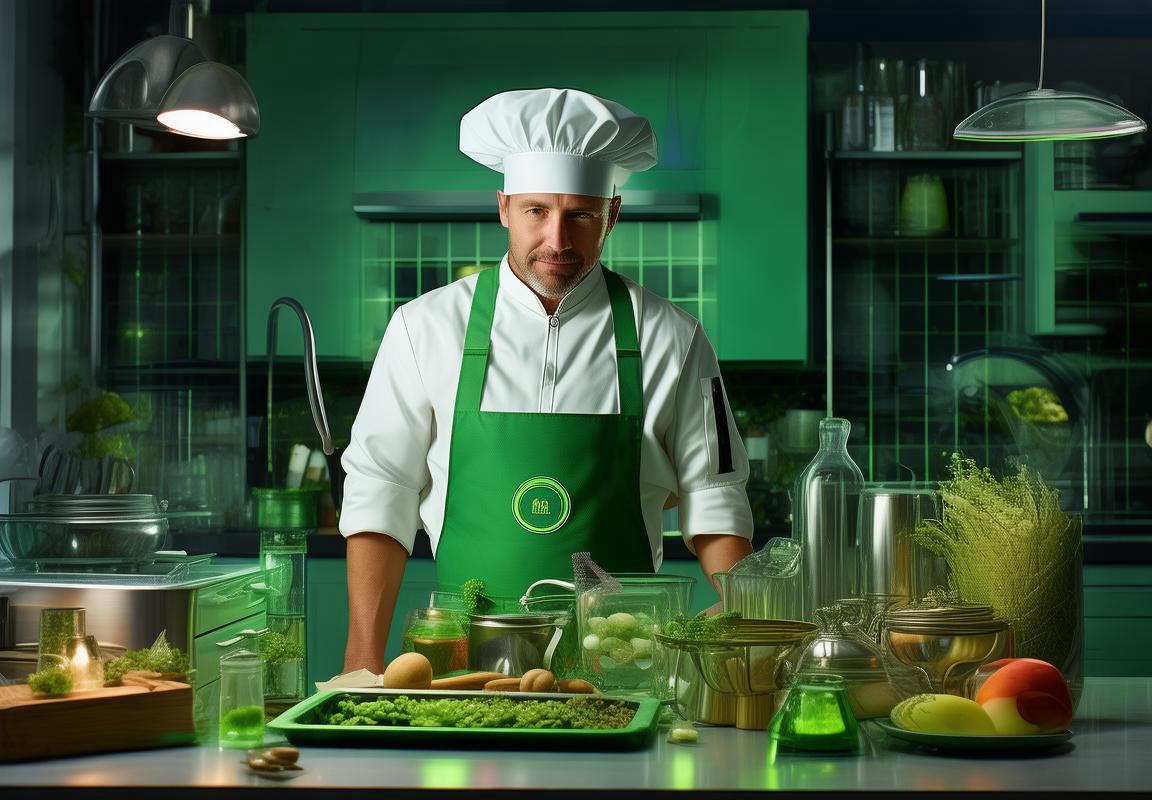
Why Choose Carbon Neutral Kitchenware?
Choosing carbon neutral kitchenware is more than just a trend; it’s a mindful decision that can have a significant impact on both the environment and your daily life. Here are several compelling reasons why opting for carbon neutral kitchenware is a choice worth considering:
-
Reducing Carbon Footprint: Carbon neutral kitchenware is designed to offset the carbon emissions produced during its creation, use, and eventual disposal. By selecting products that are carbon neutral, you’re actively contributing to reducing the overall carbon footprint of your household.
-
Sustainable Materials: Carbon neutral kitchenware often utilizes sustainable materials such as bamboo, recycled stainless steel, or biodegradable plastics. These materials come from renewable sources, which means they are less likely to deplete natural resources and contribute to deforestation or pollution.
-
Promoting Environmental Responsibility: Using carbon neutral kitchenware is a subtle yet powerful statement of your commitment to environmental stewardship. It encourages others to think about their consumption habits and the environmental impact of their choices.
-
Health Benefits: Many non-carbon neutral kitchenware items are made with materials that may contain harmful chemicals, such as BPA in plastic or lead in ceramic glazes. Carbon neutral alternatives are typically free from these toxins, making them safer for you and your family.
-
Longevity and Quality: Carbon neutral kitchenware is often crafted with high-quality materials that are designed to last. This not only reduces the need for frequent replacements but also extends the lifespan of the products, thus reducing waste over time.
-
Supporting Ethical Practices: By purchasing carbon neutral kitchenware, you’re likely supporting brands that prioritize ethical manufacturing processes. This can include fair wages for workers, safe working conditions, and a commitment to minimizing waste and pollution in production.
-
Economic Impact: The demand for carbon neutral products is growing, which can lead to a shift in the market towards more sustainable practices. By choosing these products, you’re investing in a future where sustainable options are more readily available and affordable.
-
Encouraging Innovation: The push for carbon neutral kitchenware encourages manufacturers to innovate and develop new materials and technologies that are both sustainable and functional. This can lead to a continuous improvement in the quality and variety of eco-friendly kitchenware options.
-
Educational Value: Using carbon neutral kitchenware can serve as an educational tool for children and adults alike. It can foster a deeper understanding of environmental issues and the importance of making sustainable choices in everyday life.
-
Global Warming Mitigation: The cumulative effect of individual choices can be substantial. By opting for carbon neutral kitchenware, you’re contributing to the fight against global warming by reducing greenhouse gas emissions.
-
Cultural Shift: The preference for carbon neutral kitchenware reflects a broader cultural shift towards sustainability. It signals a move away from disposable and single-use items towards reusable and long-lasting products, which can have far-reaching implications for consumer behavior.
-
Personal Satisfaction: There’s a personal satisfaction in knowing that your choices are making a difference. Using carbon neutral kitchenware can bring a sense of accomplishment and fulfillment, as you’re actively participating in the solution to environmental challenges.
In essence, choosing carbon neutral kitchenware is a multifaceted decision that touches on environmental, health, economic, and ethical considerations. It’s a simple yet effective way to live more sustainably and to encourage a healthier planet for future generations.
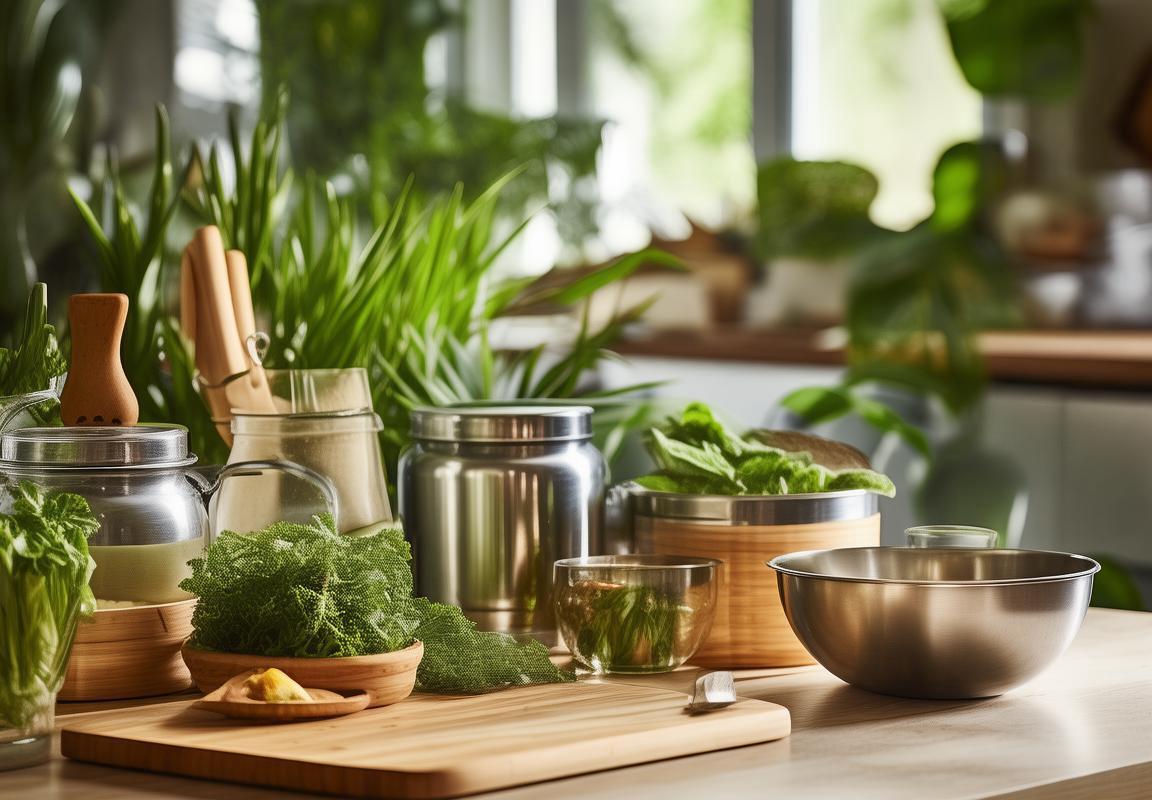
Top Picks for Carbon Neutral Kitchenware
In today’s eco-conscious world, finding kitchenware that aligns with our commitment to sustainability is more than just a trend; it’s a necessity. Here are some top picks for carbon neutral kitchenware that not only look stylish but also do their part to protect our planet.
-
Recycled Glassware: Opting for glassware made from recycled materials is a fantastic way to reduce your carbon footprint. These products often come in a variety of colors and designs, making them as aesthetically pleasing as they are eco-friendly. Plus, glass is durable and can be recycled again and again, ensuring that your choice has a long-lasting impact.
-
Bamboo Utensils: Bamboo is a fast-growing, renewable resource that requires minimal water and no pesticides to thrive. Bamboo utensils are not only durable and lightweight but also naturally antibacterial, making them a healthy choice for your kitchen. The natural grain of bamboo adds a unique texture to your utensils, and they come in various colors and patterns.
-
Stainless Steel Dinnerware: For those who prefer a sleek, modern look, stainless steel dinnerware is a fantastic option. It’s not only stylish but also incredibly durable. The best part? Stainless steel is 100% recyclable and doesn’t require harsh chemicals to produce, making it a low-carbon choice for your dining table.
-
Compostable Spoons and Forks: If you’re looking for disposable kitchenware that won’t end up in a landfill, compostable spoons and forks are a game-changer. Made from biodegradable materials like cornstarch or bamboo, these utensils can be composted at home or in a commercial composting facility, ensuring that they break down naturally without harming the environment.
-
Cork Coasters: Cork is a sustainable choice for coasters, as it comes from the bark of cork oak trees, which can be harvested without harming the tree. Cork is naturally antimicrobial, soft on your countertops, and provides excellent shock absorption for your glasses. Plus, it’s biodegradable and renewable, making it a carbon-neutral choice for your kitchen.
-
Wooden Cutting Boards: Wooden cutting boards are not only beautiful but also sustainable. Hardwoods like maple and bamboo are durable and can last for years with proper care. They’re naturally antimicrobial, which means they reduce the need for harsh cleaning agents. When the time comes for a replacement, wood can be recycled or repurposed in various creative ways.
-
Reusable Silicone Baking Mats: Silicone baking mats are a game-changer for those who love to bake. They’re reusable, non-stick, and come in various sizes and colors. They’re made from a durable material that can withstand high temperatures and is also safe for the oven. When you’re done, simply wash them with soap and water and they’re ready for their next use.
-
Organic Cotton Kitchen Towels: If you’re looking for kitchen towels that are as gentle on the environment as they are on your hands, organic cotton is the way to go. These towels are free from harmful chemicals, making them safer for your family and the planet. Plus, they’re often made from fair trade practices, ensuring that the workers are treated well.
-
Eco-Friendly Dishwasher Tablets: For those who use a dishwasher, opting for eco-friendly dishwasher tablets can significantly reduce your carbon footprint. These tablets are biodegradable and often come in packaging made from recycled materials. They’re designed to be effective without harsh chemicals, ensuring your dishes are clean and your conscience is clear.
-
Sustainable Tea Kettles: Finally, if you’re a tea or coffee enthusiast, consider investing in a sustainable tea kettle. Look for models made from stainless steel or copper, which are durable and can be recycled at the end of their life. Some brands even offer kettles with energy-saving features, reducing your carbon emissions further.
By choosing carbon neutral kitchenware, you’re not just making a statement; you’re taking a meaningful step towards a more sustainable future. Each item you select is a vote for the planet, and over time, these small choices can add up to a significant impact.
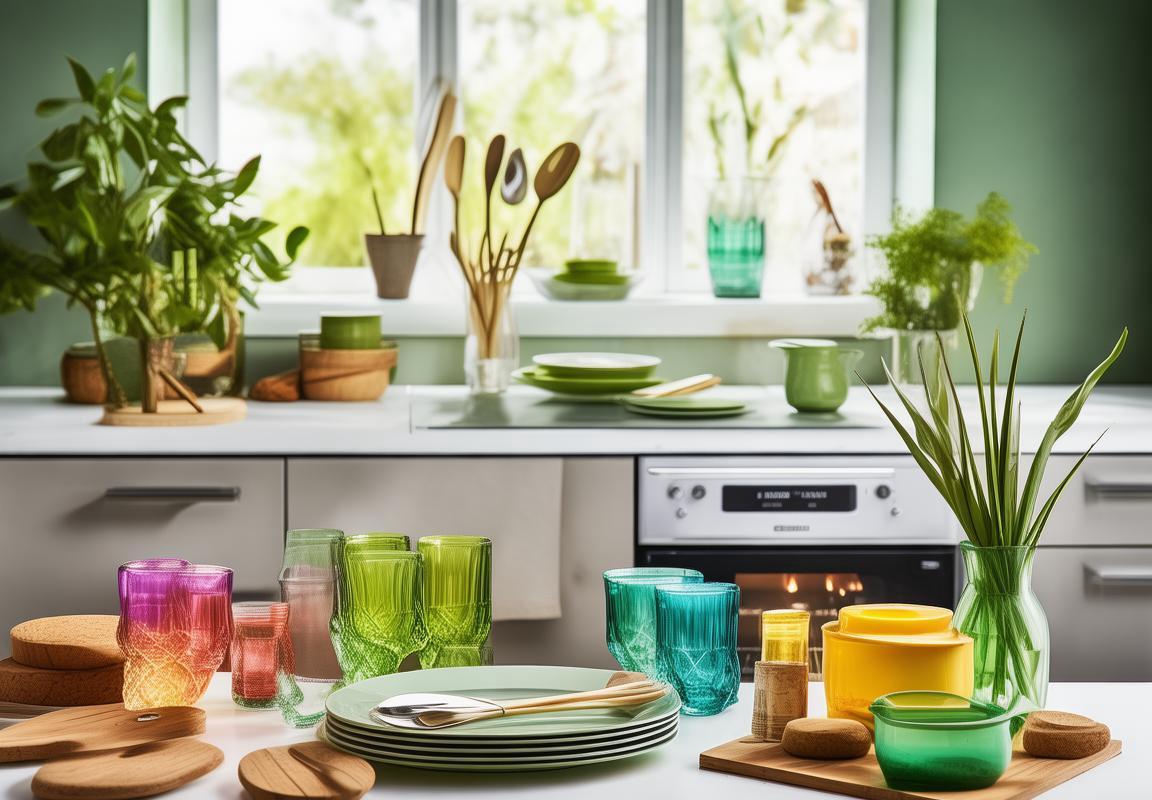
How to Incorporate Carbon Neutral Kitchenware into Your Home
Choosing carbon-neutral kitchenware isn’t just about reducing your carbon footprint; it’s about making a conscious choice for a greener future. To help you seamlessly integrate these eco-friendly products into your home, here are some practical steps and tips:
-
Assess Your Current Kitchenware CollectionBefore diving into the world of carbon-neutral kitchenware, take a moment to evaluate what you already have. Identify items that are worn out or no longer used, and consider how you can replace them with eco-friendly alternatives.
-
Research and Select Materials WiselyWhen shopping for carbon-neutral kitchenware, look for products made from sustainable materials. These can include bamboo, recycled stainless steel, glass, and plant-based plastics. Understanding the origin and processing of these materials can ensure they are truly environmentally friendly.
-
Gradual ReplacementInstead of swapping out your entire kitchenware collection at once, replace items gradually. This approach can help you budget for eco-friendly purchases and reduce waste. Start with the items you use most frequently or those that are the most worn out.
-
Opt for Durable and Versatile PiecesInvest in high-quality, durable pieces that can serve multiple purposes. For instance, a set of glassware can be used for both dining and entertaining, while a sturdy bamboo cutting board can last for years. Durable items mean fewer replacements and less waste over time.
-
Embrace Multi-Purpose ContainersConsider using stackable, airtight containers that can be used for leftovers, meal prepping, or storage. Not only do these reduce the need for single-use plastics, but they also save space in your kitchen.
-
Introduce Reusable UtensilsSwap your disposable plastic utensils for reusable options. Look for stainless steel, bamboo, or wood utensils that are not only eco-friendly but also add a touch of elegance to your kitchen.
-
Use Dishcloths and Over Paper TowelsReduce paper towel waste by using dishcloths and rags made from natural fibers. These can be washed and reused multiple times, significantly cutting down on your paper towel consumption.
-
Incorporate Compostable CutleryIf you often have outdoor meals or picnics, opt for compostable cutlery. Look for biodegradable options made from cornstarch or bamboo that won’t end up in a landfill.
-
Install a DishwasherWhile this might not be kitchenware, having a dishwasher can reduce water and energy consumption compared to hand washing. Ensure it’s energy-efficient and run it with full loads to maximize efficiency.
-
Practice Regular MaintenanceProperly caring for your carbon-neutral kitchenware will extend its lifespan. Rinse dishes thoroughly before loading the dishwasher to prevent residue buildup. Hand wash delicate items like glassware to avoid scratching or damaging them.
-
Educate Your HouseholdIncorporate the use of carbon-neutral kitchenware into daily routines by educating family members about the benefits. Explain why these choices are important and encourage everyone to contribute to a more sustainable home environment.
-
Embrace a Mindset of SustainabilityLastly, adopt a mindset that sustainability is an ongoing journey. Be open to trying new eco-friendly products and integrating them into your home. Small changes can lead to significant impacts over time.
Remember, incorporating carbon-neutral kitchenware into your home is about making sustainable choices that are both environmentally friendly and practical for your lifestyle. By taking these steps, you not only contribute to a healthier planet but also create a more conscious and efficient kitchen space.
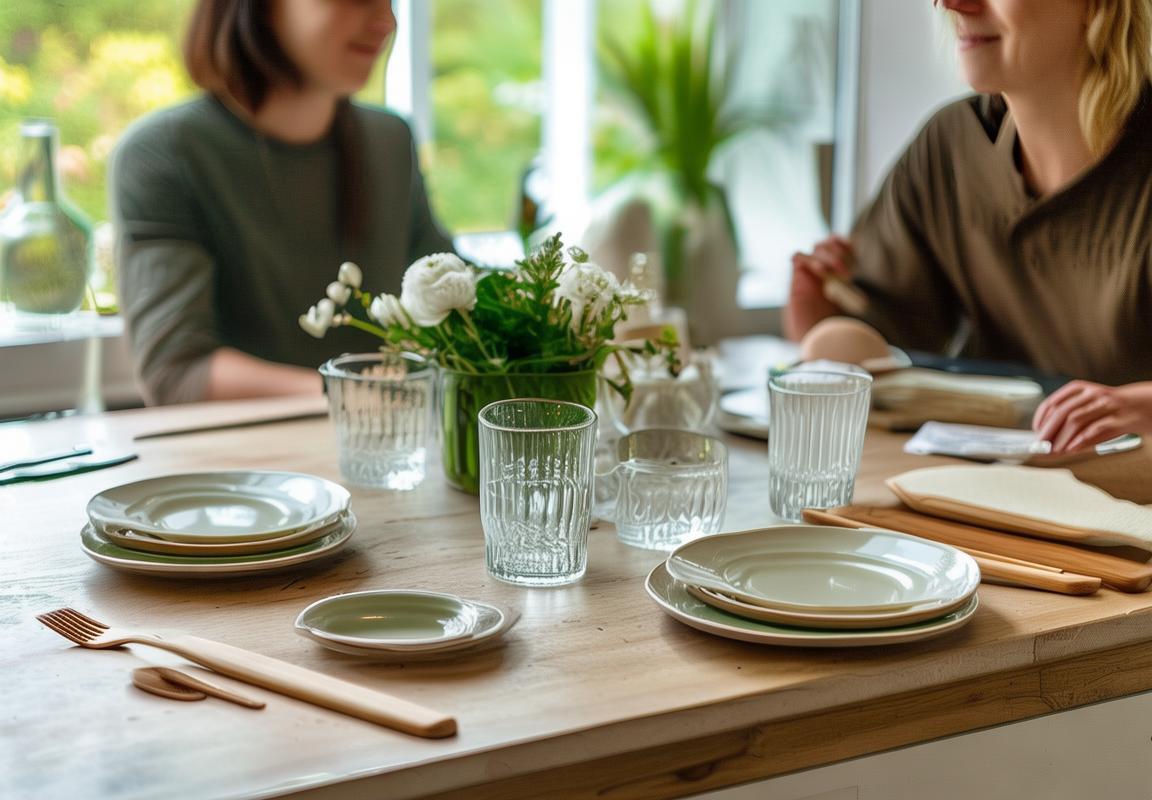
The Benefits of a Carbon Neutral Kitchen
Choosing carbon neutral kitchenware isn’t just a trend; it’s a mindful decision that can significantly impact your home and the planet. A carbon neutral kitchen offers a host of benefits, from reducing your environmental footprint to enhancing the overall quality of life. Here’s how embracing a carbon-neutral kitchen can transform your daily routines:
Sustainable Materials at the CoreThe materials used in carbon neutral kitchenware are often sourced from renewable resources. Think bamboo, recycled glass, and stainless steel, all of which are not only durable but also sustainable. This shift towards sustainable materials means less strain on natural resources and a reduction in the extraction of non-renewable materials.
Reduced Carbon FootprintBy choosing carbon neutral kitchenware, you’re directly contributing to a reduction in greenhouse gas emissions. These products are designed to have a minimal carbon footprint, either through their production process or by being made from materials that sequester carbon. This can be a significant step towards offsetting your personal carbon emissions.
Healthier LivingCarbon neutral kitchenware is often free from harmful chemicals like BPA, phthalates, and lead. This means that your food and drinks are less likely to come into contact with these toxins, leading to a healthier lifestyle. A kitchenware set that prioritizes health can make a substantial difference in the long run.
Longevity and QualitySustainable kitchenware is built to last. Items like glassware and stainless steel are not only stylish but also incredibly durable. This longevity means you’ll need to replace fewer items, thus reducing waste and the need for new products that could potentially be harmful to the environment.
Aesthetically Pleasing and FunctionalModern carbon neutral kitchenware is not just eco-friendly; it’s also designed with aesthetics in mind. From sleek, minimalist designs to vibrant, colorful pieces, these items can enhance the look of your kitchen without compromising on functionality. The result is a space that’s both stylish and sustainable.
Encourages Mindful ConsumptionHaving a carbon-neutral kitchen encourages you to think more critically about the products you purchase. It prompts you to consider the lifecycle of the items you bring into your home and the impact they have on the environment. This mindfulness can extend to other areas of your life, fostering a more sustainable lifestyle.
Supports Ethical ProductionMany carbon neutral kitchenware brands prioritize ethical manufacturing practices. This means fair wages for workers, safe working conditions, and a commitment to social responsibility. By choosing these products, you’re not only reducing your carbon footprint but also supporting a more equitable global economy.
Boosts Home ValueIn the long term, a carbon-neutral kitchen can add value to your home. As more consumers become environmentally conscious, eco-friendly features can be a selling point. A kitchen that’s both stylish and sustainable can appeal to a broader market and potentially increase your property’s worth.
Promotes Connection with NatureUsing carbon neutral kitchenware can create a more natural connection with the food you prepare and the environment. The materials often have a direct link to the earth, reminding you of the importance of preserving our planet. This connection can be a source of joy and inspiration in your daily life.
Innovative and Trend-SettingThe rise of carbon neutral kitchenware is part of a larger movement towards sustainability. By adopting these products, you’re not only benefiting your home but also contributing to the broader trend of innovation in eco-friendly living. It’s a way to be at the forefront of a movement that’s shaping the future.
Ease of Use and MaintenanceMany carbon neutral kitchenware items are designed with ease of use and maintenance in mind. For example, bamboo cutting boards are naturally antimicrobial, making them easy to clean and sanitize. This not only simplifies your kitchen routine but also ensures that your products remain in good condition for longer.
Community and NetworkingBy incorporating carbon neutral kitchenware into your home, you may also find yourself connecting with like-minded individuals. Sharing your experiences and recommendations with others can foster a sense of community and collective action towards a more sustainable future.
ConclusionIn conclusion, the benefits of a carbon-neutral kitchen are multifaceted. From environmental impact to health and aesthetics, these benefits underscore the importance of making sustainable choices in our daily lives. By embracing carbon neutral kitchenware, you’re not just making a difference in your own home; you’re also contributing to a larger global movement towards a greener, healthier planet.
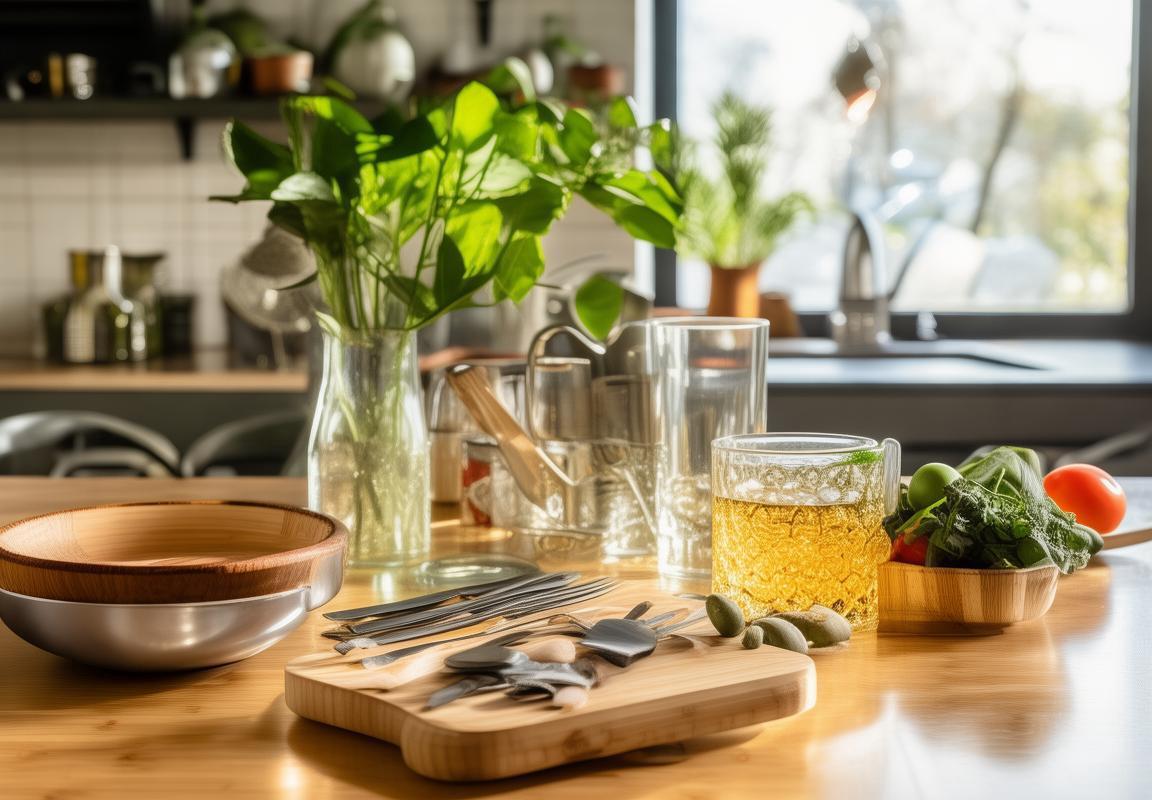
Tips for Buying Carbon Neutral Kitchenware
Navigating the eco-friendly kitchenware market can be daunting, but with a few tips in mind, you can make more informed choices. Here are some key pointers to consider when purchasing carbon neutral kitchenware:
-
Look for Certification Marks: When shopping for carbon neutral kitchenware, seek out products with official certifications. Labels like the Forest Stewardship Council (FSC), the Rainforest Alliance, and the CarbonNeutral Company are reputable and can assure you that the product has been produced with consideration for the environment.
-
Prioritize Natural Materials: Opt for items made from natural materials like bamboo, stainless steel, glass, or ceramic. These materials are not only durable but also renewable, making them a more sustainable choice compared to plastics and other synthetic materials.
-
Check for Biodegradable Options: If you’re looking to minimize waste, look for kitchenware that is biodegradable. This means that the product will decompose naturally at the end of its life, reducing the environmental impact of your kitchen waste.
-
Avoid Single-Use Items: Carbon neutral kitchenware is not just about the materials; it’s also about reducing waste. Try to avoid single-use plastics and opt for reusable alternatives. This could be anything from glass storage containers to metal straws and silicone baking mats.
-
Research the Manufacturing Process: A product’s carbon footprint doesn’t end with the raw materials. Look into the manufacturing process, as some companies offset their emissions by investing in renewable energy or reforestation projects. Companies that are transparent about their environmental efforts are often worth supporting.
-
Consider the Lifecycle: When choosing carbon neutral kitchenware, think about the entire lifecycle of the product. A high-quality, durable piece that lasts for years will have a lower carbon footprint than a cheaper, disposable item, even if both are carbon neutral.
-
Read Reviews and Do Your Homework: Before making a purchase, read reviews from other consumers. They can provide insights into the real-life performance and durability of the kitchenware. Additionally, do some research on the brand’s reputation and environmental policies.
-
Shop Locally When Possible: Buying local can significantly reduce the carbon footprint associated with shipping. If you have access to local markets or shops that carry carbon neutral kitchenware, consider purchasing from them to support local businesses and minimize transportation emissions.
-
Be Mindful of Packaging: Even carbon neutral products can be environmentally unfriendly if they come packaged in excessive plastic or other non-renewable materials. Choose items with minimal packaging or packaging that can be easily recycled or reused.
-
Look for Energy-Efficient Alternatives: When choosing kitchenware, consider items that can help you reduce energy use. For example, ceramic or glass dishes retain heat better than plastic, which can lead to lower energy consumption when reheating leftovers.
-
Support Companies with Clear Environmental Goals: Some companies are committed to sustainability and have clear goals for reducing their carbon footprint. Supporting these brands can encourage the industry to prioritize eco-friendly practices.
-
Be Open to Secondhand Options: Sometimes, the most sustainable choice is buying secondhand. Check out local thrift stores, online marketplaces, or garage sales for carbon neutral kitchenware that someone else has already used and loved.
Remember, the goal of purchasing carbon neutral kitchenware is to make a positive impact on the environment. By taking these tips into account, you can contribute to a greener kitchen and a healthier planet.

Closing Thoughts on Sustainable Kitchenware Choices
In recent years, the concept of sustainability has seeped into every aspect of our lives, and kitchenware is no exception. Making the switch to sustainable kitchenware can seem daunting, but the benefits are manifold. Here are some closing thoughts on why these choices matter and how they can positively impact your life and the planet.
Consider the environmental impact of your everyday utensils. The average American throws away about 1,600 pounds of plastic each year, much of which ends up in landfills or oceans. By opting for carbon neutral kitchenware, you’re taking a stand against this trend. These items often have a lower carbon footprint due to their production methods, which can include sourcing materials from renewable resources or using less energy-intensive manufacturing processes.
Transitioning to sustainable kitchenware is also a way to support local economies. Many eco-friendly brands are small, independent businesses that prioritize ethical sourcing and fair labor practices. By purchasing from these companies, you’re not only reducing your carbon footprint but also investing in communities that share your values.
One of the most immediate benefits of a carbon neutral kitchen is the peace of mind that comes with knowing you’re contributing to a healthier planet. These products are free from harmful chemicals like BPA, phthalates, and PFOA, which can leach into food and water. By using them, you reduce the risk of exposure to these toxins, which is especially important for those with sensitive health conditions.
Another advantage is the longevity and versatility of sustainable kitchenware. Items like glassware, stainless steel, and bamboo are durable and can last for years, reducing the need for frequent replacements. This not only saves you money in the long run but also minimizes waste.
The aesthetic appeal of carbon neutral kitchenware should not be overlooked. Many sustainable options are beautifully designed, offering a stylish alternative to traditional plastics and metals. Whether you prefer a minimalist look or something with a more rustic charm, there’s a sustainable option out there that can enhance your kitchen’s aesthetic.
When it comes to sustainability, it’s not just about the products you choose; it’s also about the mindset behind them. Using carbon neutral kitchenware encourages you to be more mindful of your consumption habits. It prompts you to think twice before you toss away an item or to seek out alternatives to single-use plastics.
In terms of practicality, sustainable kitchenware is often designed with convenience in mind. For example, silicone spatulas and non-stick coatings made from natural materials are just as effective as their conventional counterparts but without the risk of harmful chemicals. This makes the transition to a carbon neutral kitchen a seamless one.
One of the challenges of embracing sustainable kitchenware is the initial cost. Many eco-friendly options are priced higher than their traditional counterparts. However, when you factor in the durability and the fact that you won’t need to replace these items as often, the overall cost savings can be significant.
Another consideration is the availability of products. While the market for sustainable kitchenware has grown, it may still be harder to find certain items compared to mainstream options. This is changing, though, as more retailers and online stores recognize the demand for eco-friendly products. Shopping smart by looking for bulk deals or seasonal sales can help mitigate the higher initial cost.
The benefits of a carbon neutral kitchen extend beyond the home. When you use these products, you’re also setting an example for others. Your choices can inspire friends, family, and even your community to make more sustainable choices in their own lives.
In conclusion, the move to a carbon neutral kitchen is a multifaceted decision that can have a significant impact on both your personal well-being and the health of the planet. It’s a choice that encourages mindfulness, supports local businesses, and promotes a cleaner, healthier environment. As the market for sustainable kitchenware continues to expand, it becomes easier and more rewarding to make these eco-conscious choices. Remember, every small step counts, and your kitchen can be a powerful statement of your commitment to a greener future.